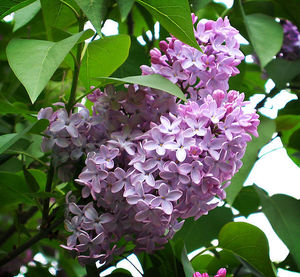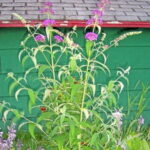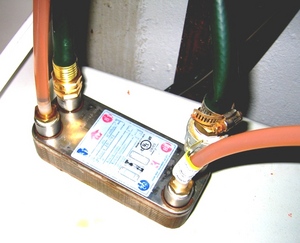Lilacs evoke the feelings of grandeur and nostalgia of days gone by, plus they’re just down right pretty, smell good and are easy to grow. Plant a lilac bush or two in your landscape and enjoy them for years with these planting and growing tips.
When To Plant Lilacs
Start with lilac bushes suited for your climate. Lilacs need at least 25 days of below freezing temperatures yearly, unless they are a hybrid variety, which are the best type to plant in warmer climates. Ask for lilac recommendations at your local nursery. Lilacs can be planted in the spring or fall. The first season’s blooms won’t be much to brag about, but each succeeding year the lilac bush will produce more blooms.
Where To Plant Lilacs
Plant lilacs in a sunny location in well draining soil. Lilacs need at least six hours of direct sun per day and the bushes will not tolerate soggy soil. Soil can be amended with compost, well rotted cow manure or other organic material to improve drainage, then plant lilac bush in amended soil.
How To Plant Lilacs
Lilacs can be planted as individual bushes or as a hedge row – space individual plants 10-15 feet apart, lilacs for hedge rows should be planted 6 feet apart. Dig a hole for each lilac as deep as the plant’s container and about a foot wider. Mix a dose of slow release, low-nitrogen fertilize or rose food into the soil before planting lilacs. Set plants into holes, fill each hole halfway then water until soil is saturated. Finish filling the hole with soil and water again. Spread a two inch layer of mulch on top of the soil to retain moisture.
After Planting Care For Lilacs
During the first summer, water lilacs deeply once per week. After the first year, lilacs will not require watering unless there is a drought.
After the initial feeding at planting time, lilacs do not need to be fed. If an established lilac is not thriving, apply one dose of slow release fertilize in the spring.
Lilacs are easy to prune, just snip off the bloom stalks once the flowers have withered. Every few years, prune away some of the old woody stems by cutting them off near ground level, that will encourage new growth on the lilac bush.
Powdery mildew is a common pest on lilacs, presenting with dusty, white leaves on the bush. Get rid of powdery mildew on lilacs by mixing 1 tablespoon of baking soda and 2 ½ teaspoons of olive oil into a gallon of water and spraying mixture on lilac’s foliage every two weeks.
How To Cut Lilac Blooms
Cut lilacs for arrangements in the early morning, when they are full of moisture and at their peak of freshness. Choose tightly budded stem for cutting, cut at any length desired, making the stem cut just above where leaves join stem.
Once indoors, re-cut lilac stems at an angle, strip off all leaves that might touch vase water and contaminate it. Change vase water every 2-3 days and re-cut stem ends with each water change.







